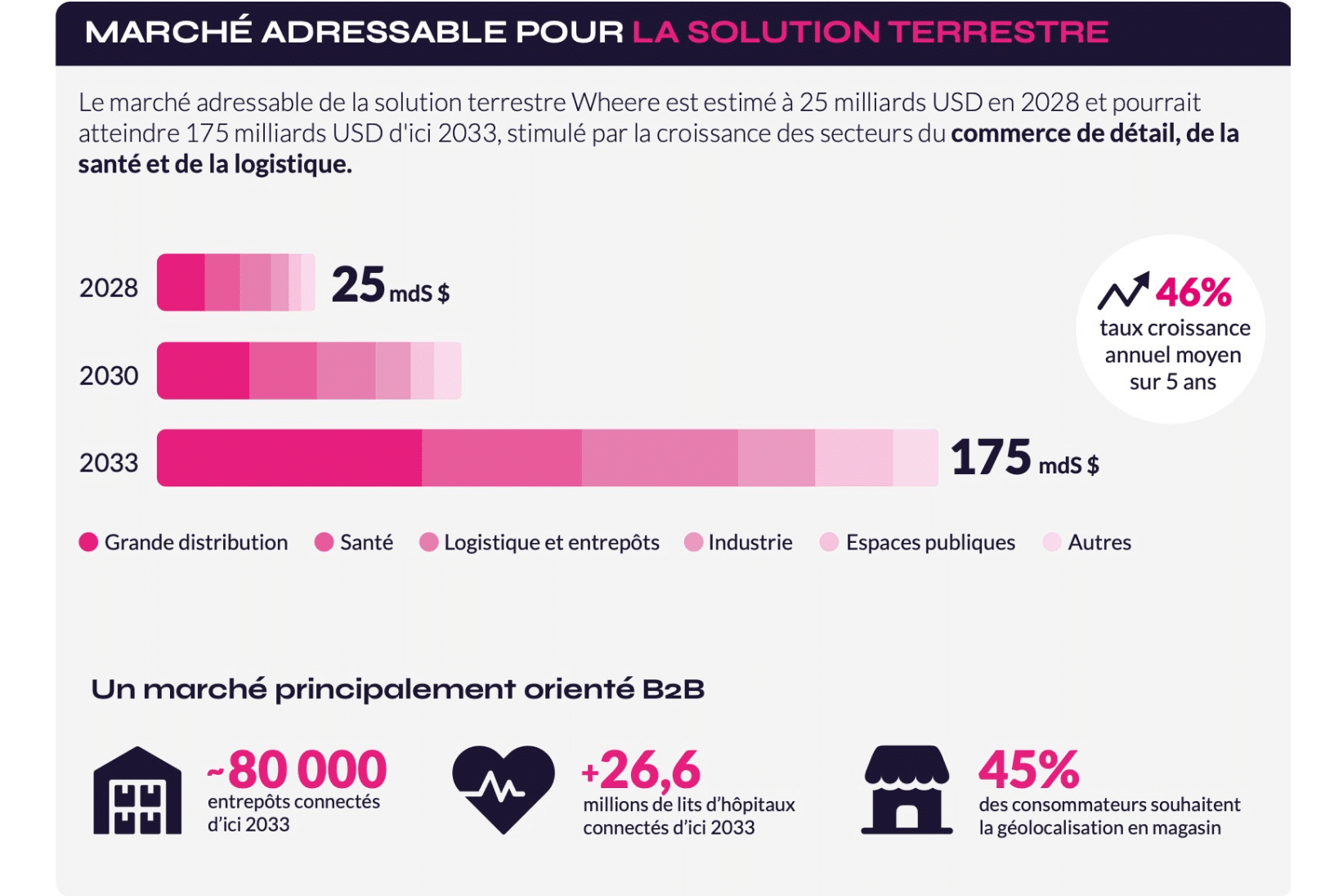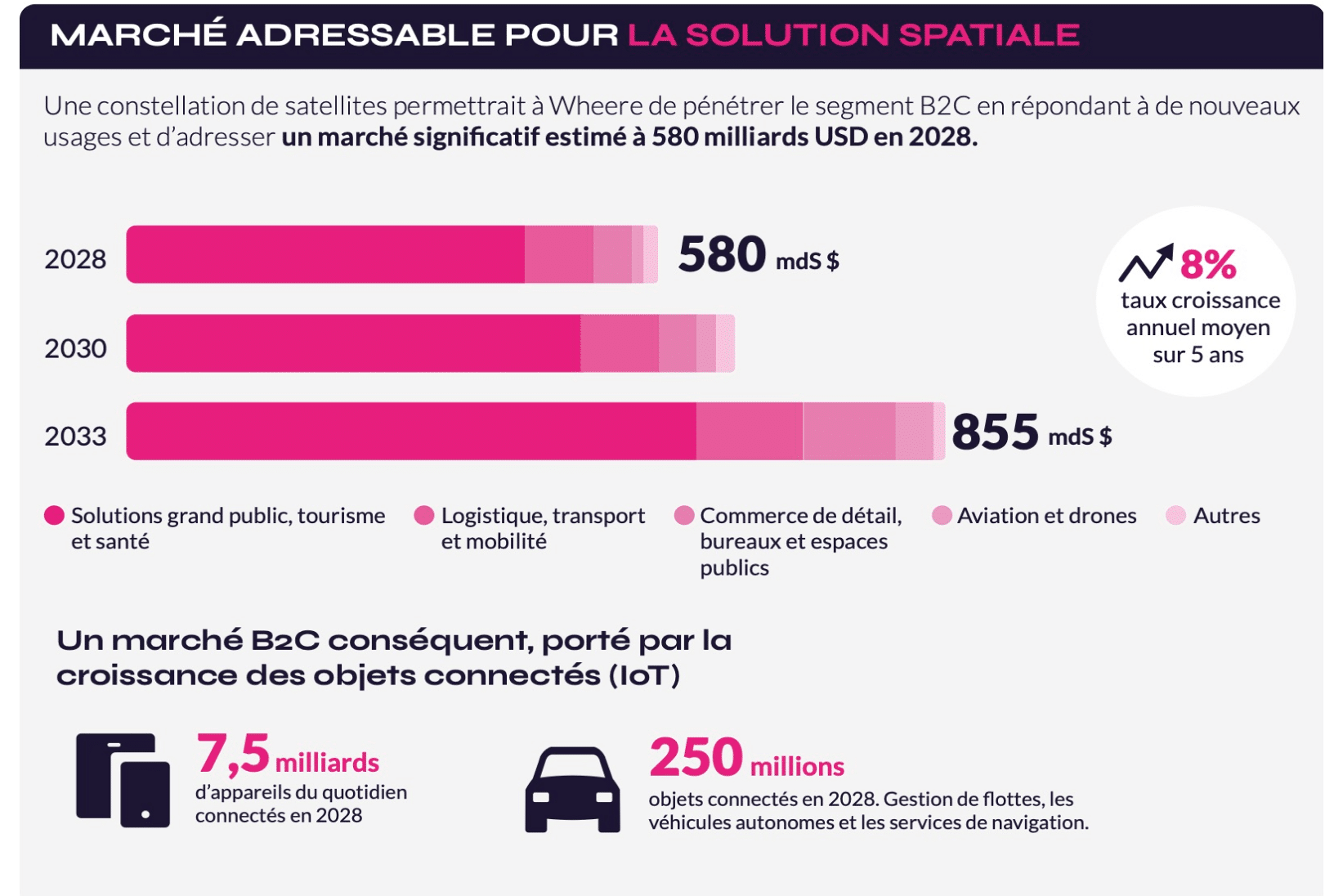
Indoor geolocation: a huge market
Share this article
Contents
Share this article
The Alcimed study : background and objectives
Indoor geolocation is becoming a cornerstone of technological innovation, responding to the growing need for precision and continuity in navigation. A market study carried out by Alcimed on behalf of Wheere highlights the potential of this market.
This study assessed the addressable market for Wheere's geolocation solutions, distinguishing between two models:
- The terrestrial solution, based on the installation of antennas in the vicinity of the area to be covered, the model currently deployed by Wheere.
- The space solution, based on a constellation of satellites, eliminating the need for local infrastructure.
"It may not be something we perceive today, but there is a massive adoption of indoor geolocation technologies" Alexandre Corral, Market Research Expert at Alcimed.
Land-based solution: 18% annual growth rate
Indoor geolocation technologies have seen massive adoption in recent years. The market has seen impressive average annual growth of 18% over the past five years. This dynamic can be explained by several major trends, the most notable being the explosion in the number of connected devices, the rapid development of cloud services, and the digitization of processes to improve asset traceability. Added to this are the limitations of indoor GPS solutions, and a strong demand for improved customer experience. These combined factors have positioned indoor geolocation as a key technology in many sectors.
UWB (Ultra Wideband) technology is fast becoming the standard for indoor geolocation solutions. It has been adopted by major brands such as Apple and Samsung. This trend marks a decisive turning point for the sector, and augurs well for the growing success of Wheere's terrestrial solution.
By offering 100 times greater coverage while reducing the complexity of the infrastructure required, Wheere addresses the main limitations of current technologies.

Space solutions: towards unlimited global coverage
The space-based indoor geolocation solution developed by Wheere paves the way for mass adoption. Thanks to a constellation of low-orbit satellites, it reduces costs and removes the constraint of local infrastructures.
This innovation would enable Wheere to respond to new BtoC uses, driven by the boom in connected objects (IoT). Sectors such as tourism, healthcare, mobility and retail could benefit from this solution, which simplifies and enriches the services offered to consumers.
According to Alcimed's study, Wheere's space solution could considerably expand its addressable market, reaching 580 billion USD by 2028. Combining accuracy, scalability and optimized operational costs, this technology is positioned as an improved alternative to the GPS model, while opening up new economic and technological perspectives.

Watch the Alcimed study presentation in replay
Are you an investor?
After an initial seed financing round of €11 million, which closed in 2023, Wheere is preparing its Series A, scheduled for 2025.
Did you like it?
Share it and discover other articles you might also like!
- News
- News
- Articles

